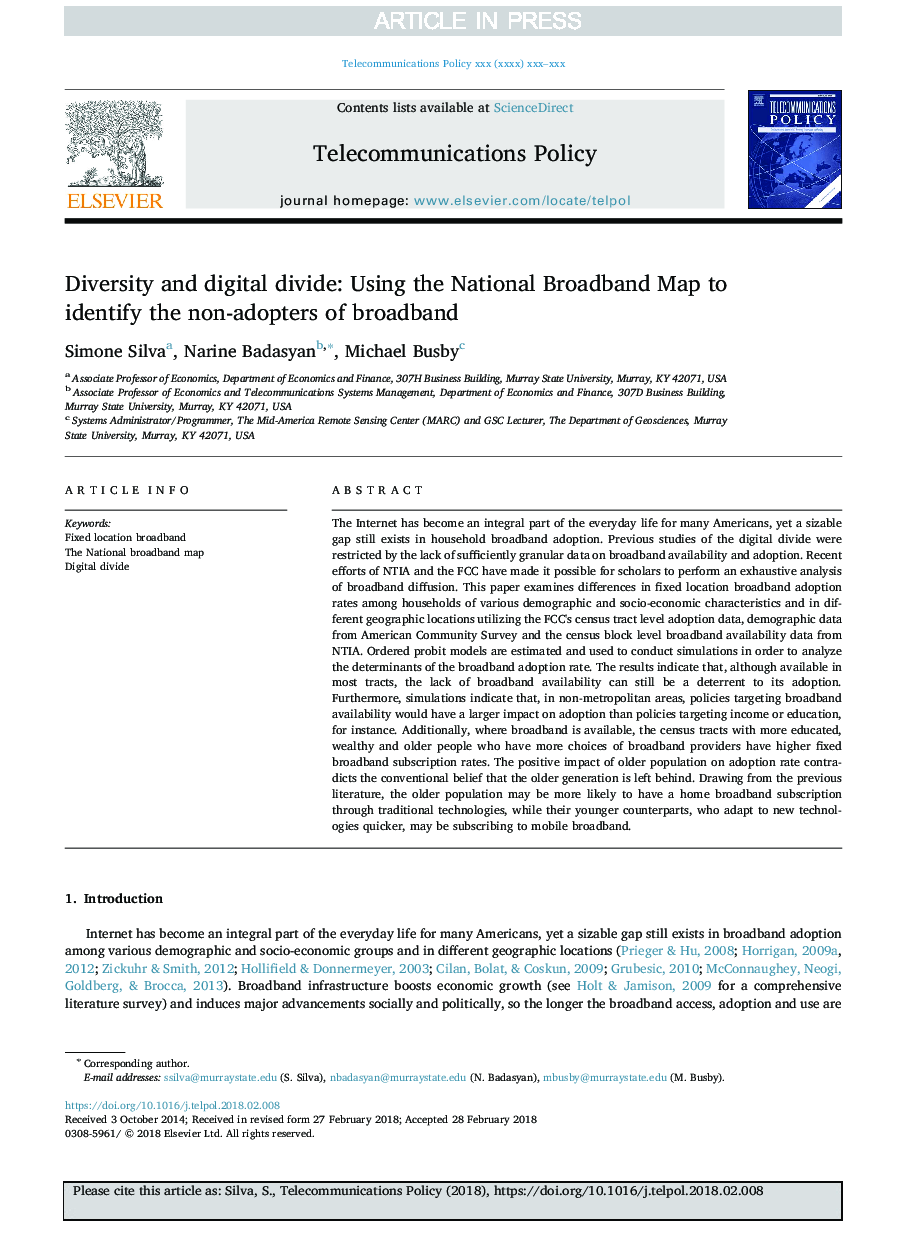| کد مقاله | کد نشریه | سال انتشار | مقاله انگلیسی | نسخه تمام متن |
|---|---|---|---|---|
| 6950232 | 1451535 | 2018 | 13 صفحه PDF | دانلود رایگان |
عنوان انگلیسی مقاله ISI
Diversity and digital divide: Using the National Broadband Map to identify the non-adopters of broadband
ترجمه فارسی عنوان
تنوع و تقسیم دیجیتال: با استفاده از نقشه ملی پهنای باند برای شناسایی غیر متداول از پهنای باند
دانلود مقاله + سفارش ترجمه
دانلود مقاله ISI انگلیسی
رایگان برای ایرانیان
کلمات کلیدی
پهنای باند مکان ثابت، نقشه پهنای باند ملی، تقسیم دیجیتال،
موضوعات مرتبط
مهندسی و علوم پایه
مهندسی کامپیوتر
سیستم های اطلاعاتی
چکیده انگلیسی
The Internet has become an integral part of the everyday life for many Americans, yet a sizable gap still exists in household broadband adoption. Previous studies of the digital divide were restricted by the lack of sufficiently granular data on broadband availability and adoption. Recent efforts of NTIA and the FCC have made it possible for scholars to perform an exhaustive analysis of broadband diffusion. This paper examines differences in fixed location broadband adoption rates among households of various demographic and socio-economic characteristics and in different geographic locations utilizing the FCC's census tract level adoption data, demographic data from American Community Survey and the census block level broadband availability data from NTIA. Ordered probit models are estimated and used to conduct simulations in order to analyze the determinants of the broadband adoption rate. The results indicate that, although available in most tracts, the lack of broadband availability can still be a deterrent to its adoption. Furthermore, simulations indicate that, in non-metropolitan areas, policies targeting broadband availability would have a larger impact on adoption than policies targeting income or education, for instance. Additionally, where broadband is available, the census tracts with more educated, wealthy and older people who have more choices of broadband providers have higher fixed broadband subscription rates. The positive impact of older population on adoption rate contradicts the conventional belief that the older generation is left behind. Drawing from the previous literature, the older population may be more likely to have a home broadband subscription through traditional technologies, while their younger counterparts, who adapt to new technologies quicker, may be subscribing to mobile broadband.
ناشر
Database: Elsevier - ScienceDirect (ساینس دایرکت)
Journal: Telecommunications Policy - Volume 42, Issue 5, June 2018, Pages 361-373
Journal: Telecommunications Policy - Volume 42, Issue 5, June 2018, Pages 361-373
نویسندگان
Simone Silva, Narine Badasyan, Michael Busby,
